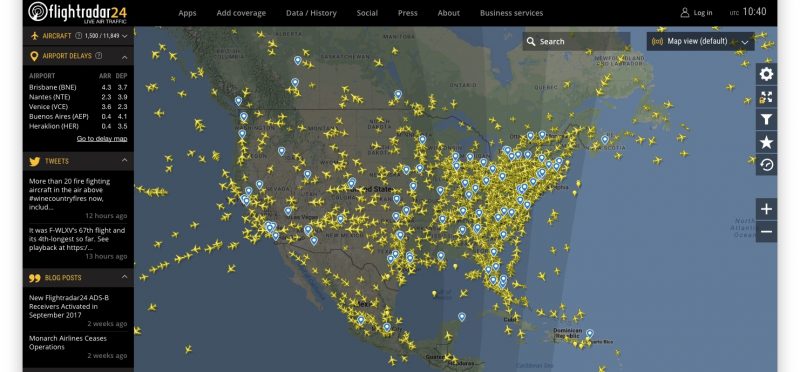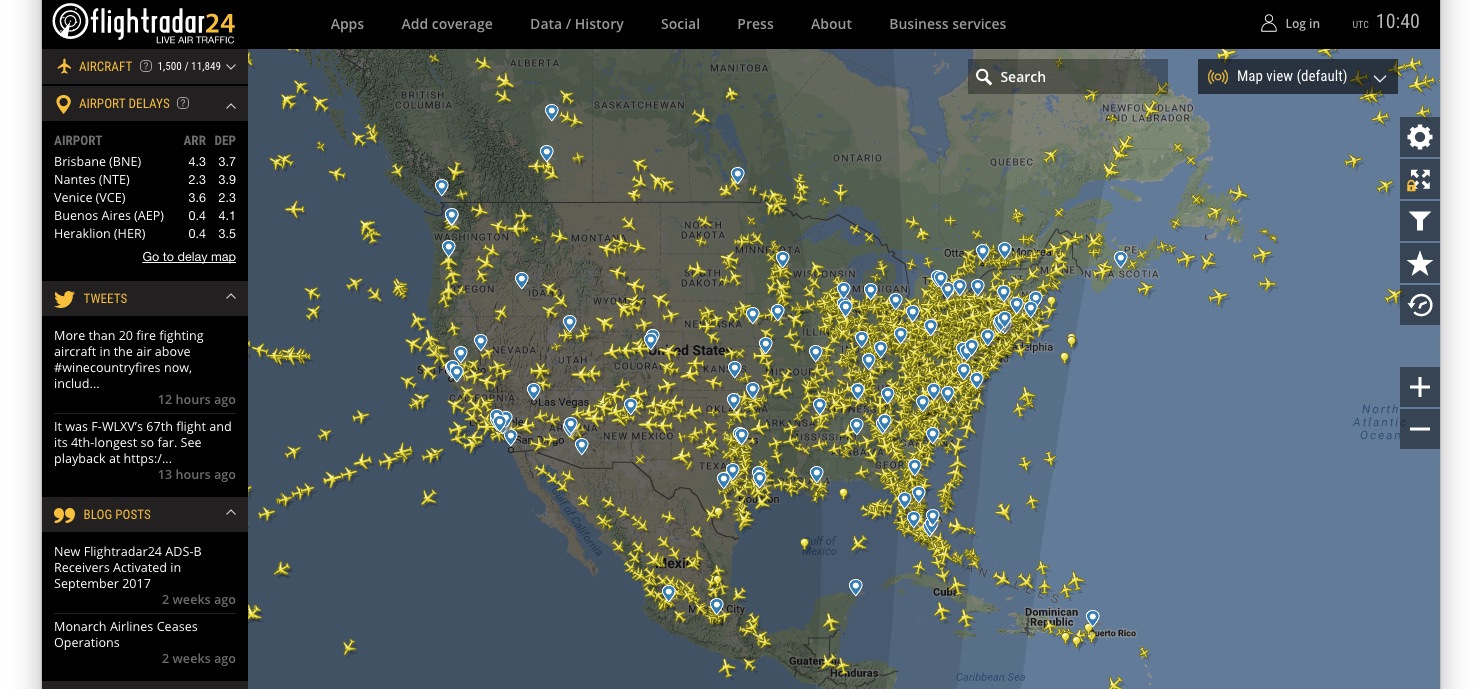
NBAA arms attendees with iPads to fight US ATC reform
By cameron in Uncategorized
US ATC reform was a dominant topic at the annual gathering of the NBAA-BACE, National Business Aircraft Association (NBAA) Business Aircraft Convention and Exhibition (BACE) in Las Vegas, NV.
As part of the association’s efforts to fight US ATC privatization, 25,000 NBAA attendees were approached by members of a special ‘ATC Not for Sale’ team armed with iPads and encouraged to fill out a digital petition on a dedicated website.
NBAA president and CEO Ed Bolen says:
“The so-called ATC-privatization bill effectively represents a give-away of America’s aviation system to a board of special interests, unaccountable to Congress.
“Business aviation professionals must make their voices heard to prevent ATC privatization and put congressional and FAA focus on what is truly important — modernizing the aviation system, so that it remains the world’s best, five, 10 and 25 years from now.
“Our convention represents an important opportunity to help people mobilize on this critical issue.”
As we continue our series on the questions surrounding US ATC reform, we look at why this topic pits the powerful US airline industry against the equally powerful US general aviation sector.
The NBAA’s official stance on the matter of US ATC privatization is that HR 2997, the 21st Century AIRR Act, is little more than an elaborate, misguided scheme to sell US infrastructure out from under the public, putting it in the hands of a private sector entity which may not distribute capacity equitably among private and commercial aviation stakeholders.
“[It] seeks to privatize the air traffic control system and reduce general aviation access to airports and airspace. Based on every metric, the US has the largest, most diverse, most complex and safest airspace system in the world.
“All stakeholders have fair and equitable access to our airspace, which is not the case in certain countries with privatized ATC systems,” the association states.
“The new entity will be unaccountable to Congress, and its decisions for managing the system could threaten access for all citizens, companies and communities that rely on general aviation.
“Recently, three independent, non-partisan government entities reviewed HR 2997 and raised serious concerns. The Congressional Budget Office determined air traffic control privatization would “increase the deficit by $100 billion,” while the Congressional Research Service said the legislation is ‘likely unconstitutional.’ Finally, the Government Accountability Office found that ATC privatization ‘may jeopardize modernization efforts.’”
Politics aside
Speaking during the opening sessions of the NBAA-BACE, Congresswoman Dina Titus, representing the First District of Nevada in the US House of Representatives, said to attendees:
“I can tell you that I’m disheartened that we continue to talk about privatization. We need modernization not privatization.”
She adds that while there is a push by some in the GOP for privatization, it didn’t seem as if there were sufficient votes for the proposal to pass.
At the same time, she describes the outlook for the FAA re-authorization as “bleak.”
A re-authorization of the budget for the FAA is key to the progress of ATC modernization programs already underway.
For his part, FAA Administrator Michael Huerta describes US general aviation as key to propelling the US economy and helping the country in times of difficulty, as during the recent hurricanes.
He describes ATC modernization as key to meet growing demands on the US airspace and says:
“We need to make sure NAS remains accessible to all users.”

ADS-B
One of the principle technical factors at play in terms of US ATC modernization, under the FAA’s NextGen program, is that aircraft must be equipped with ADS-B equipment to adequately communicate with satellite-based flight tracking.
US airlines have only equipped a small percentage of their aircraft with such devices, mainly those aircraft flying long-haul overseas destinations.
The bulk of the fleet flying domestically is still not equipped to communicate with the NextGen ATC systems the FAA has already installed where these are operational. Some have said it is unlikely airlines will meet the 2020 deadline for equipping their full fleet with ADS-B.
General aviation has received the same mandate as airlines to equip aircraft for ADS-B communications by 2020, and many aircraft owners are already complying with retrofit requirements, or own aircraft that are already equipped.
This lack of parity in installation would mean that the first beneficiaries of the evolving NextGen ATC infrastructure would be business jet owners.
The airline view
Airlines are not mincing words in their complaints against what they believe are half-truths presented by the FAA on the progress of NextGen ATC in the US.
In a series of speeches and letters over the past few years, airlines have repeatedly questioned whether NextGen can ever be effectively be deployed, can do what it has set out to do once deployed, and whether it can be properly called NextGen “Next Generation” at this point because it also incorporates technologies extant in the US airspace management system which are legacy technologies.
In a letter sent to John Thune, chairman, Committee on Commerce, Science and Transportation of the United States Senate written by Captain Billy Nolan, senior vice president, safety, security and operations of Airlines for America (A4A), the lobbying group representing most of the nation’s largest air carriers, Nolan hints at the conflict between general aviation and commercial aviation on this matter:
“When speaking about the benefits of NextGen, FAA typically speaks of benefits in totality, rather than specifically to the airline community.
:That is not incorrect, but it masks the relatively small portion of the total benefit that accrues to airlines, making it seem like the airlines are receiving a substantial return on their investment.
“In particular, the $160 billion in total lifecycle NextGen benefits often shared by FAA with media and Congress include benefits to the general aviation community, to passengers and to the environment.
“Again, it is not wrong to quantify those things, but failing to split them out makes the endeavor less transparent and, at times, misleading.”
![]()

